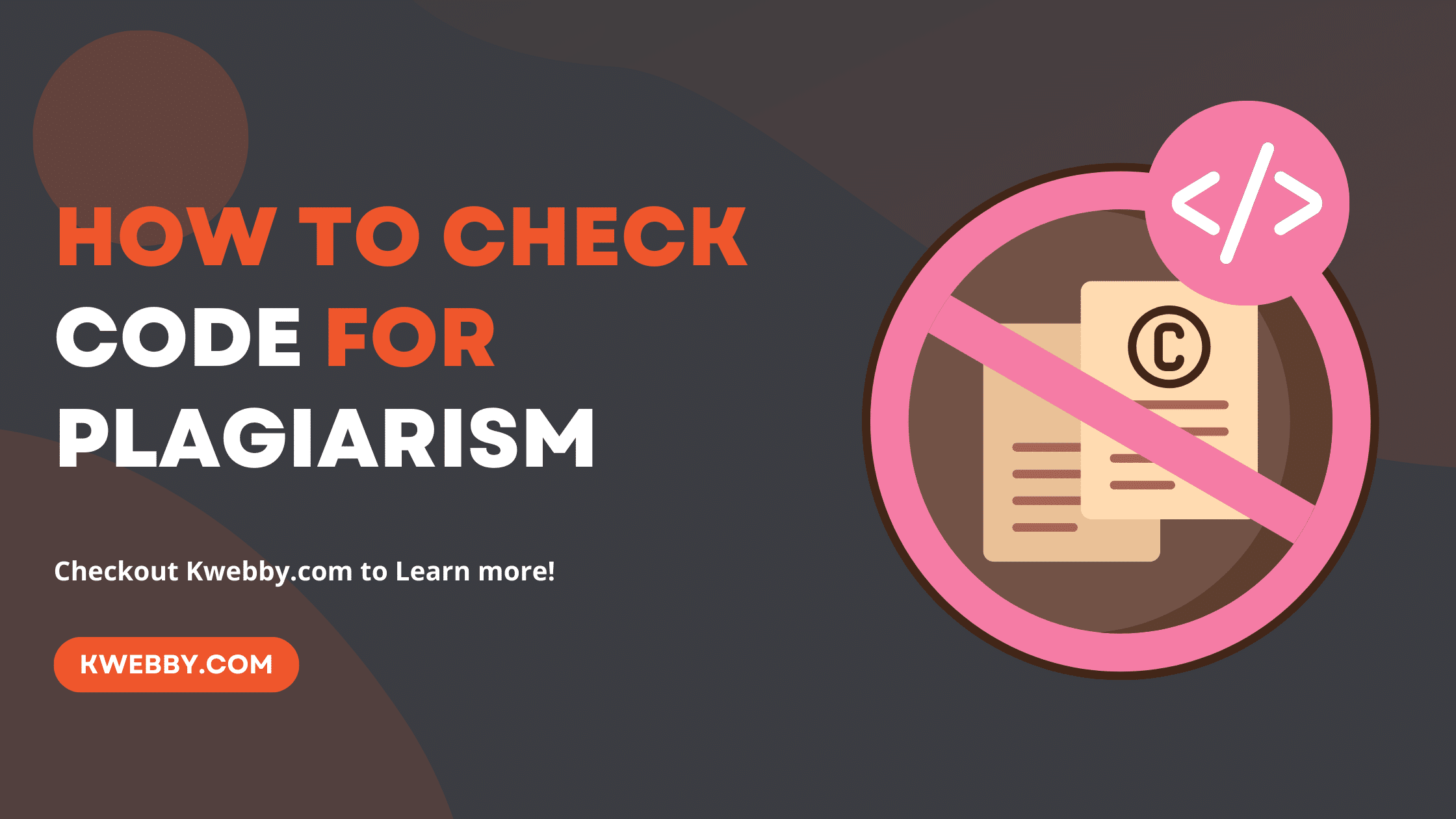
How to Check Code for Plagiarism (4 Methods)
In the fast-paced world of software development, ensuring the originality of code is paramount. As instances of code plagiarism rise, it becomes essential to understand How to Check Code for Plagiarism effectively.
This not only protects the integrity of intellectual property but also upholds the standards of coding practices. As a professional in the field, or as an academic overseeing programming assignments, possessing the knowledge and tools to detect copied code is imperative.
In this guide, we will navigate through various strategies and resources available to identify plagiarism in coding projects, ensuring your work or that of your students remains authentic and respects the contributions of developers worldwide.
With a keen eye and the right techniques, preserving the uniqueness of code is within reach.
Check out our Free Plagiarism Checker tool here.
What Is the Plagiarism Code?
Plagiarism in code refers to the act of copying or closely mimicking the source code of another programmer without proper attribution.
This unethical practice can occur in various contexts, including academic settings where students may submit duplicated code as their work or within the professional software development field where the original code is illicitly reused in different applications.
Detecting plagiarism in code can be more intricate than in written content due to the nature of programming languages and logic patterns, which might legitimately resemble each other in independent projects.
12 Best Plagiarism Checkers (All are Free!)
Methods for Checking Codes for Plagiarism
To effectively combat plagiarism in code, it’s essential to have a systematic approach. Implementing the following points will help identify potential cases of code copying and ensure academic integrity. These include:
Manual Comparison
Although time-consuming, manual comparison of code can be an effective method to detect plagiarism. By analyzing the structure, logic, and variable names used in different projects, you can identify similarities and assess whether they are legitimate or copied.
Using Online Plagiarism Checkers
Online plagiarism checkers are sophisticated tools that scan and compare code to detect potential plagiarism. Here are some popular ones, along with a brief overview:
Codequiry

Codequiry is a multi-language code plagiarism checker that uses advanced techniques such as fingerprinting and machine learning algorithms to identify similarities in code. It’s also one of the few checkers that allow custom repositories, making it an ideal option for academic settings.
MOSS (Measure of Software Similarity)
Developed by Stanford University, MOSS is a popular plagiarism detection tool that compares code from different projects and generates a report highlighting similarities. It can be used for both academic and professional purposes and supports various programming languages.
JPlag

JPlag is a plagiarism detection tool specifically designed for Java and C/C++ code. It uses a combination of different algorithms to detect similarities in syntax, structure, and logic. JPlag also generates a detailed report with highlighted similarities.
Aside from plagiarism checkers, tools are specifically designed to compare code and detect similarities.
You can check the latest releases here or check the tool here.
Code Plagiarism Checker
Code Plagiarism Checker is another online tool that compares code and generates a report with highlighted similarities. It supports various programming languages and also offers a plagiarism detection API for integration into other applications.
Code Similarity Checker
Code Similarity Checker is a plagiarism detection tool specifically designed for software development teams. It supports multiple programming languages and integrates with popular code management platforms like GitHub, GitLab, and Bitbucket.
Compare Submissions Against Known Sources
Run a comparison test between the student’s submission and known source codes from repositories, open-source projects, or other sources. This helps detect identical or similar codes that could indicate copying.
By integrating these measures, educators and industry professionals can thoroughly check for code plagiarism and promote a culture of originality and ethical code development.
Turnitin Review – Is it Worth Your Bucks?
Importance of Checking Codes for Plagiarism
Checking for plagiarism in code is crucial for several reasons.
Upholding Academic Integrity
In academic institutions, it’s vital to maintain academic integrity by using a plagiarism detection tool. This ensures that students learn to solve problems independently and the knowledge they acquire reflects their efforts.
Protecting Intellectual Property
Software developers invest significant time and skill into creating unique source code. A code plagiarism checker helps safeguard their work against unauthorized use and maintains the ecosystem of innovation and respect in the industry.
Maintaining Quality Standards
By using a code similarity checker, you can ensure that the code quality is up to the industry standards. This is because plagiarism can lead to poor coding practices and eventually to unreliable software.
Identifying and Mitigating Security Risks
Copied code might introduce unwanted vulnerabilities. Plagiarism checkers can therefore be a part of a security protocol, helping to detect plagiarism that could lead to potential security flaws in software.
Encouraging Originality and Ethical Practices
Regular plagiarism checking using reliable plagiarism checkers encourages programmers to create original code and practice ethical coding, thus fostering a culture of honesty and creativity in the field of computer science.
Advanced Algorithmic Detection
Modern plagiarism detection tools often incorporate sophisticated algorithms that can detect code similarity beyond basic matches, taking into account variables, logic structures, and even comments within the code, reducing false positives.
By prioritizing plagiarism checks in your academic or professional programming ventures, you reinforce the significance of original work and ethical conduct.
Whether it’s in programming courses involving students or professional software development environments, incorporating consistent use of plagiarism checkers ensures the integrity of code and the credibility of programmers.
7 Types of Plagiarism (with Examples & Tips to Avoid)
Conclusion
In conclusion, understanding how to check code for plagiarism is crucial in upholding software development and education standards. Code integrity is fundamental to developer and institution credibility, requiring a multifaceted approach to detect and deter plagiarism. Manual verification and documented findings validate the process. A strong ethical foundation, reliable technical solutions, and clear policies establish a culture of originality and innovation.





